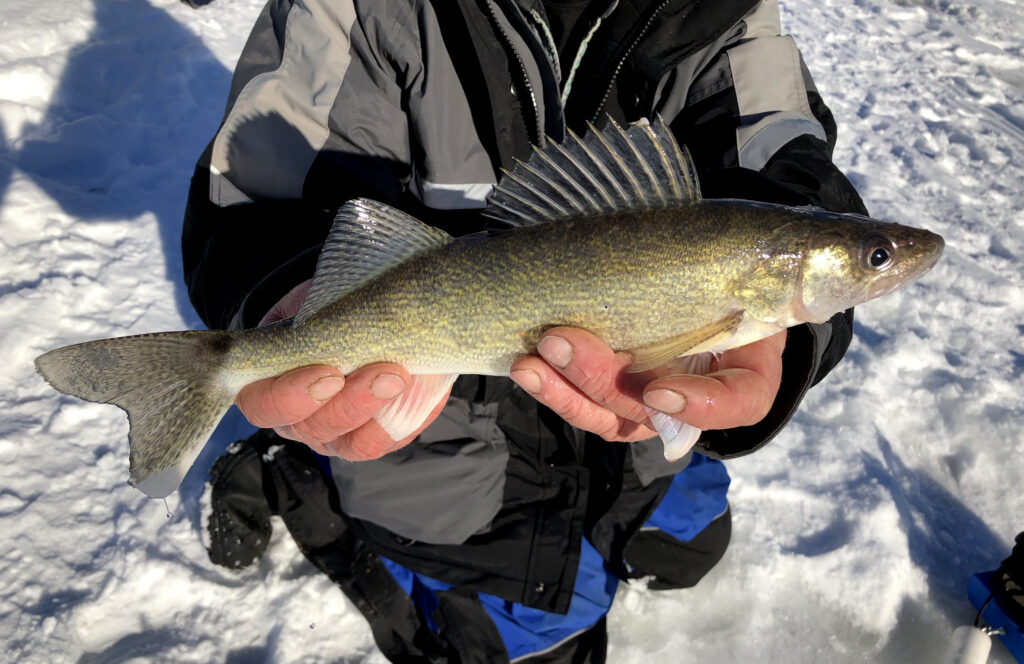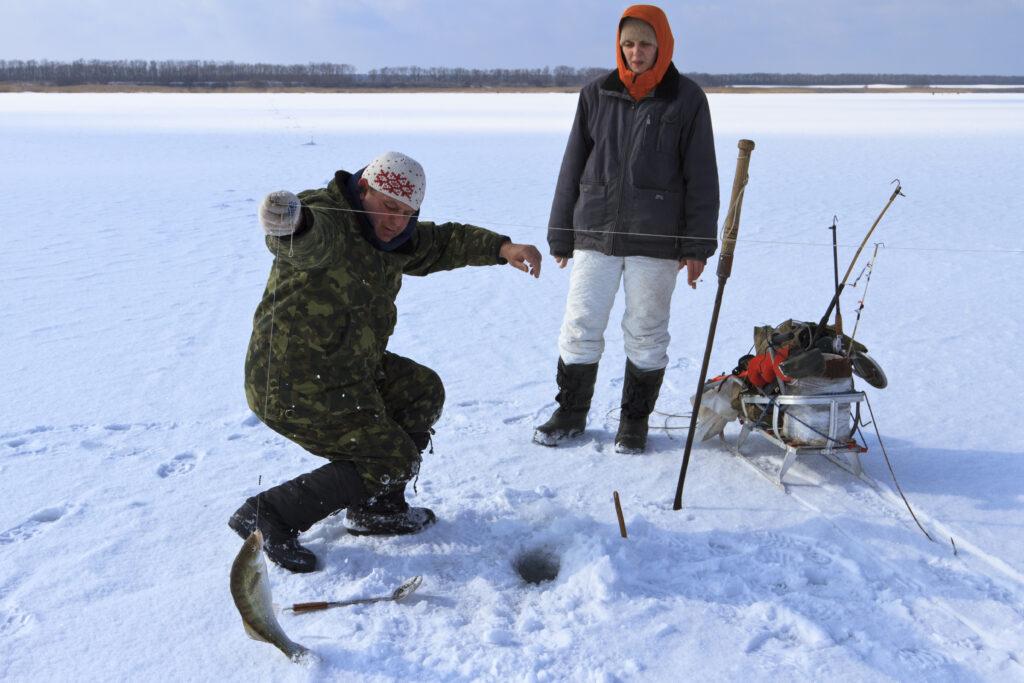When the water begins to freeze and the days grow shorter, many anglers hang up their rods and declare walleye season to be over. However, those willing to brave the cold can be rewarded with some of the year’s best fishing. Jigging for walleye is a great winter activity, and it can be surprisingly easy to do once you get the hang of it.
The key is to use a light jigging rod and a small jig, such as a minnow or a grub. For best results, fish in areas with deep water and slow currents. As you lower your jig to the bottom, keep an eye on your line. When you feel a bite, wait a split second before setting the hook.
This will give the fish time to take the bait fully into its mouth, making for a cleaner catch. With a little practice, you’ll be jigging for walleyes like a pro in no time.

Jigging for Walleye in the Winter
Jigging for walleye is a common tactic used by anglers in the winter months. The basic idea is to use a jigging rod for fishing in a vertical jigging motion, imitating the movements of a baitfish. This action is often combined with live bait, such as minnows or leeches, to further attract walleye. Lures also work well. What Size Lures are Best for Walleye Ice Fishing? goes into the best lures to use when jigging for walleye.
When done correctly, jigging can be an effective way to catch walleye in the wintertime. The key is to use a light touch and keep the jigging motion subtle. otherwise, the fish will swim away because of the unnatural movements of the bait.
Another important consideration is depth. Walleyes tend to move up and down in the water column throughout the day, so it is important to adjust your presentation accordingly. With a little practice, jigging can be an effective way to put more walleye in the ice fishing hole this winter.
The Best Time of Day to Jig for Walleye
The best time of day to jig for walleye is in the early morning hours before the sun has a chance to warm up the water. During this time, the fish are more likely to feed near the bottom, making them easier to target.
The best way to find walleye during this time is to use a depth finder to locate deep water areas where they are likely to be hiding.
Once you have found a promising spot, cast your line and allow the bait to sink to the bottom. Then, use a slow, jerk-and-pause motion to bring the bait back up through the water column.
This technique is especially effective when using live bait, as the movement imitates a wounded fish struggling to escape. By targeting walleye in the early morning hours, you can maximize your chances of landing a big one. Our article, Does Time Of Day Matter For Ice Fishing? highlights different things to consider when ice fishing in the winter.

How to Find a Good Spot to Jig for Walleye
Before heading out onto the water, it’s important to do your research and choose a good spot to jig for walleye. A good start is looking at online maps of the area you plan to fish. These maps can help you identify likely locations where walleye might be feeding.
Once you’ve narrowed down a few potential spots, the next step is to head out on the water and start exploring. Look for areas with deep drop-offs, submerged logs or rocks, or other structures that walleye are known to frequent.
When you find a promising spot, drop your line and start jigging! With a little patience and perseverance, you’re sure to hook into a trophy walleye in no time.
Tips and Tricks for Becoming a Better Jigger
Among avid fishermen, there is always debate about the best techniques for various fish. When it comes to walleye, jigging is often considered the best method. Jigging involves using a weighted lure so that it can be easily cast and retrieved with a jerking motion. Read What Do Walleye Eat in Winter? to dive deeper into learning how to catch more walleye while ice fishing in the winter.
This technique can be effective in several different situations, but there are a few tips and tricks that can help to increase your success. First, it is important to use the right size bait. Smaller baits are often more effective in clear water, while larger baits can be better in murky water.
Second, pay attention to the action of your rod. The key is to use short, quick motions that mimic the movement of a struggling baitfish.
Finally, be patient. Walleye are notoriously difficult to catch, so it may take some time before you see results. However, if you follow these tips, you will increase your chances of landing a trophy walleye.